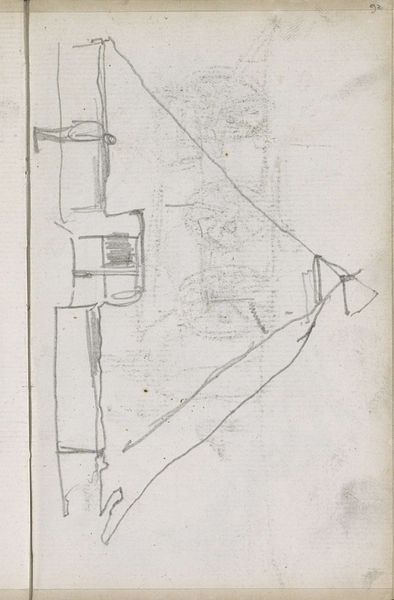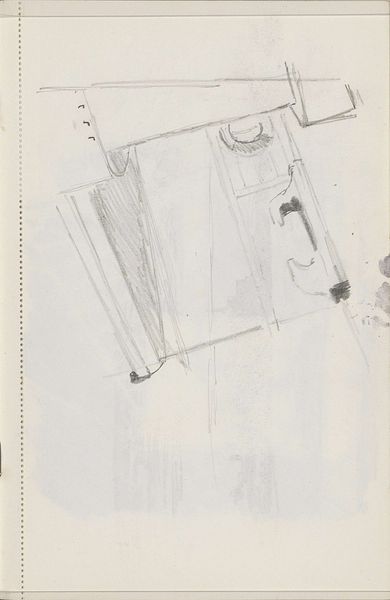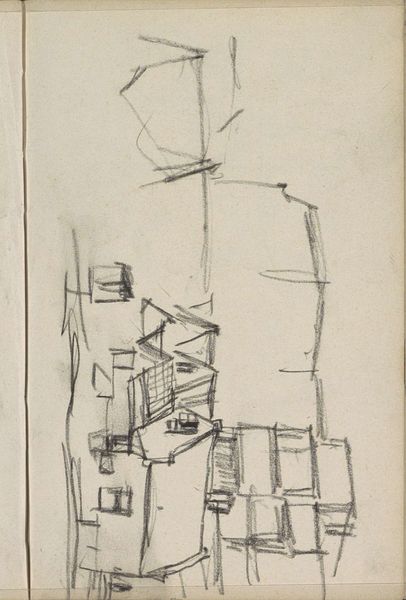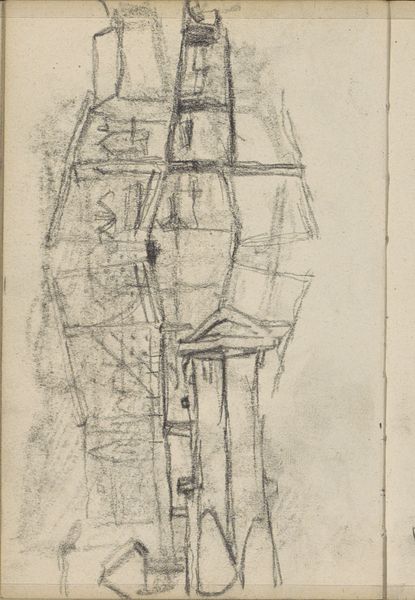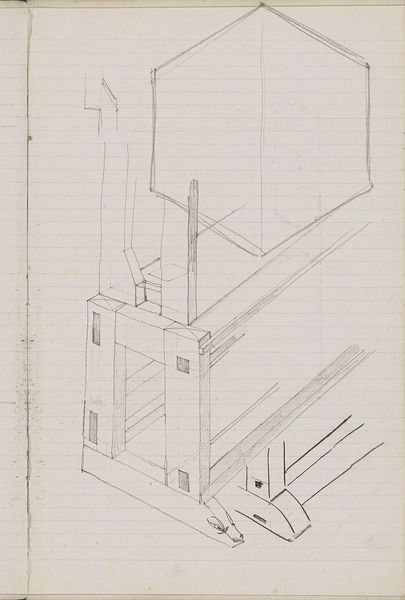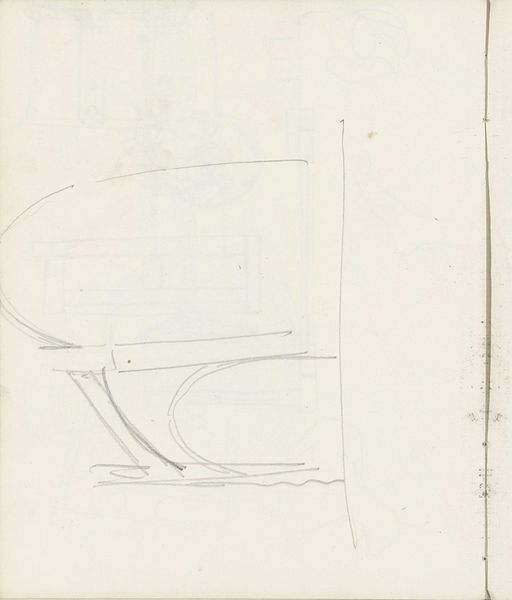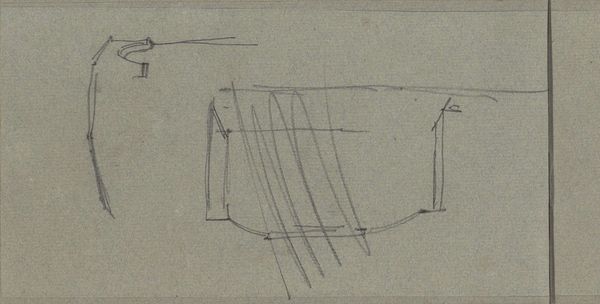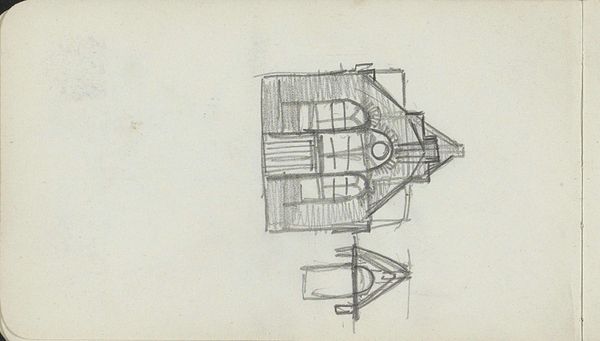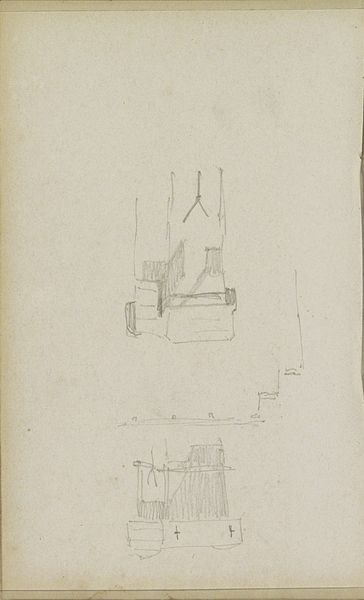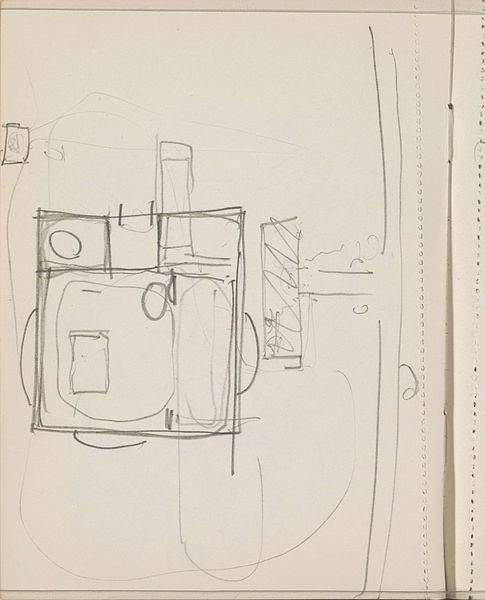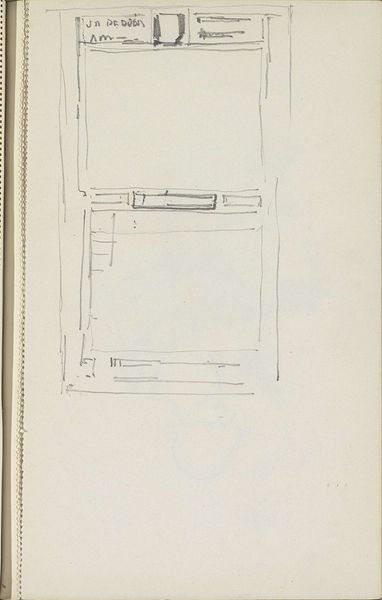
drawing, pencil, architecture
#
drawing
#
art-nouveau
#
geometric
#
pencil
#
architecture
Copyright: Rijks Museum: Open Domain
Curator: Here we have Carel Adolph Lion Cachet's "Ontwerp voor een raam of poort," a pencil drawing from around 1900, currently held in the Rijksmuseum. It seems to be an architectural study. Editor: My initial impression is one of fragility. The tentative pencil lines and open space create an ephemeral quality, as if the structure could vanish at any moment. There is definitely a sense of yearning, as a depiction of something grand in the faintest terms. Curator: Lion Cachet was working during the Art Nouveau period, and although this is a preliminary sketch, we can see certain Art Nouveau characteristics. It's an attempt to bring craftsmanship back into modern life, a kind of reimagining of boundaries. What I mean to suggest here, is how does one go through it? What doors are available to women or colonised people, or to whom? It is not about who goes through that door, but *how*. Editor: Absolutely. And those geometric patterns, the semi-circular shapes, and repeating linear motifs... they act as cultural cues, hinting at ritualistic pathways and transitions. Think of temple gates or even thresholds that separate the secular from the sacred. Do the geometric aspects, perhaps, intend to elevate people beyond everyday struggles? Curator: Interesting. The symbolism resonates strongly in this work. This could serve to promote ideals of nationhood as well, or reinforce other societal standards. How else could these be applied or perceived in the time period it was produced, in conjunction to movements related to women’s rights? Are there hidden symbols within the Art Nouveau details, a subversive narrative about women finding strength through ornamentation and artistic expression? Editor: Potentially, yes. The gateway can be a transitional period. But ultimately this feels unresolved, the bare structure not yet adorned. It's an idea in nascent form, full of latent potential. Curator: Thinking of Lion Cachet's larger body of work and the context of colonialism and nation-building, this sketch raises many questions. It provides insight into the intersectional struggles for identity, representation, and agency that can be interpreted in similar contexts in our day and age. Editor: For me, this sketch is an illustration, or perhaps an unfinished one. It's an invitation to consider how even a simple architectural form can tap into deeply embedded cultural narratives, which become relevant or irrelevant depending on circumstances, in turn providing insight to our understanding of today’s architectural forms.
Comments
No comments
Be the first to comment and join the conversation on the ultimate creative platform.
